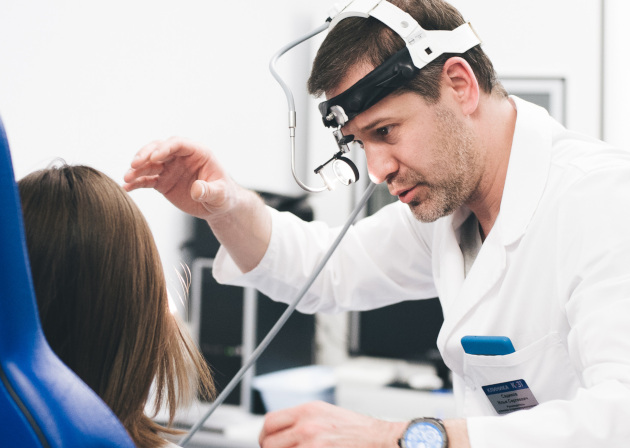Endolaryngeal infusion

specialists

equipment

treatment
The need for the endolaryngeal method for various diseases

Endolaryngeal irrigation is a key method for a variety of diseases, including:
- Acute and chronic inflammation of the larynx and trachea
- Laryngotracheitis
- ARVI
- Different forms of laryngitis
- Voice disorders
- Laryngeal spasms
- Allergies
- Ear inflammation
- Pharingitis
- Sore throat
And also diseases associated with the professional use of the voice. These conditions can manifest themselves through dry throat, burning, coughing, voice changes, and other symptoms.

Neglected cases of these diseases can lead to serious consequences. Therefore, at the first signs of discomfort, it is important to consult a doctor. Early diagnosis and properly selected treatment speed up the recovery process.
The endolaryngeal irrigation procedure has its limitations. Among them:
- Pathologies of the thyroid gland when its functions are impaired
- Malignant neoplasms of any location
- Intolerance or allergic reaction to drugs used during treatment
Doctors recommend different approaches to treatment, depending on the stage and severity of the disease. After a thorough examination and tests, the specialist develops an individual plan, which may include endolaryngeal irrigation as one of the effective methods of therapy.
General information about the Endolaryngeal Infusion procedure

How is an appointment with an otolaryngologist at K+31?
Our doctors

This award is given to clinics with the highest ratings according to user ratings, a large number of requests from this site, and in the absence of critical violations.

This award is given to clinics with the highest ratings according to user ratings. It means that the place is known, loved, and definitely worth visiting.

The ProDoctors portal collected 500 thousand reviews, compiled a rating of doctors based on them and awarded the best. We are proud that our doctors are among those awarded.
Make an appointment at a convenient time on the nearest date
Price
Other services



































Using medications directly into the larynx
Sometimes conventional methods such as gargles or tablets are ineffective to combat sore throat. In such cases, a method of direct administration of drugs into the larynx, known as endolaryngeal administration, is used. This approach involves the use of special devices to spray medications aimed at treating and eliminating inflammatory processes directly in the larynx area. Agents most commonly used for this route of administration include antiseptics, antibiotics, antivirals, and others that help reduce inflammation and fight infections.
Intralaryngeal infusion is especially valued for its ability to deliver drugs directly to the site of inflammation, which significantly increases the effectiveness of treatment. The procedure is recommended for various throat diseases, including acute and chronic forms of laryngitis, as well as for diseases associated with professional activities that require active use of the voice.
The use of the endolaryngeal method allows for significant improvement in the condition without pain and discomfort for the patient. Depending on the diagnosis, specific medications can be selected to reduce swelling, eliminate allergic reactions and alleviate symptoms of diseases. The course of treatment and the need for repeated procedures are determined by an otolaryngologist, which ensures high effectiveness of therapy.